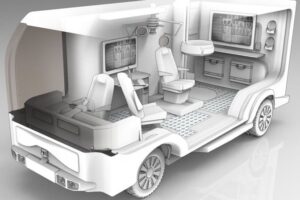The implant attracts diseased immune cells, enabling researchers to study and target them with a nanoparticle-based treatment.
The post Multiple sclerosis: Cell-catching implant helps identify successful treatment in mice appeared first on Michigan Engineering News.

 Michigan Engineering | University of Michigan
Michigan Engineering | University of Michigan 